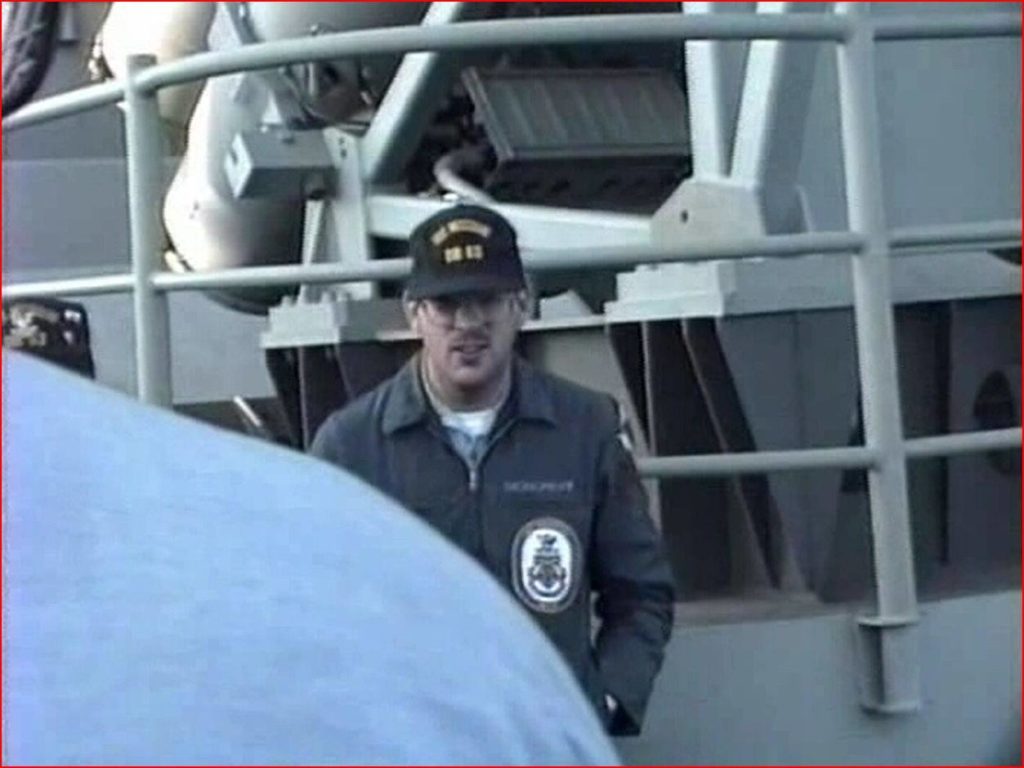I resubscribed to Audible audio book service and have been listening to books during my hour long commute to and from work. Last week I finished Tin Can Titans by John Wukovits.
The book captured my imagination immediately by introducing the scene of American ships entering into Tokyo Bay just before the Japanese surrender in WWII. I spent two years aboard the US Navy destroyer USS Cochrane (DDG-21), that was forward deployed at the Yokosuka naval base in Tokyo Bay. The hills around that base and city were pockmarked with tunnels and caves that had been dug during WWII and sealed up after the war. After that hitch, I spent two more years aboard the USS Missouri (BB-63) so I’ve always been a Pacific fleet guy and interested in things that happened there in WWII. Here is part of the book’s opening:
Admiral William F. Halsey had not been this satisfied since before the war. As he looked across the waters of Tokyo Bay on August 29, 1945, from the bridge of his flagship, the USS Missouri–the battleship nicknamed “Mighty Mo”–a conglomeration of battleships and cruisers steamed behind in a long line stretching to the horizon…
Halsey might justifiably place his Missouri in the first spot, giving his battleship the honor of taking the victorious United States into Tokyo Bay as conquering heroes come to lay claim on a defeated foe. He instead handed that honor to a trio of destroyers, O’Bannon (DD-450), Nicholas (DD-449), and Taylor (DD-468), smaller vessels dwarfed in size by “Mighty Mo,” which followed them in line.
I could tell this would be my kind of book. Destroyers and Mighty Mo. I smiled at the thought. This introduction had three things I knew, destroyers, Tokyo Bay, and the battleship Missouri. Here is a photo of me recently shared on social media by a shipmate on the USS Missouri (BB-63)

I frequently wondered about the war and the history of what happened. As I walked around the Yokosuka base and the decks of the Missouri, it was hard not to wonder about all of the history that had happened right there where I stood.
I read a couple of history books back then, but little about the role of destroyers in winning WWII. One book I do remember reading back then was called Retaking the Philippines, so I was familiar with MacArthur’s campaign in that country. I spent a lot of time time at Subic Bay and used that book to learn more about the last stand at Corregidor and the Bataan Death March, as well as MacArthur’s return to Leyte Gulf.
Tin Can Titans was especially fascinating to me given the places I have seen and been. Of course I had heard of Guadalcanal, but never had full appreciation of the importance of winning there. According to Tin Can Titans, Guadalcanal was the key to turning the tide of the war. Lose Guadalcanal and chances were good that the entire Pacific could be lost, including Australia. Destroyers played a vital role in securing that victory.
As a tin can sailor myself, I understood the role of these ships as one of expendibility. We were there to be on the front lines, to run picket keeping the enemy far from more important assets like carriers and such. On a tin can, you can hear the ocean sloshing against the hull right where you sleep. More than once, I imagined how little it would take for something to come right through that bulkhead and have ocean come pouring in on us as we slept.
The Tin Can Titans book does a nice job of explaining what it was like for the destroyer men of WWII. They spent many long hours in battle. Sometimes having no rest from the previous engagement before the fighting resumed. It wasn’t overly difficult to sink these ships. Some were struck by gunfire or devastated by kamikazes.
I was moved by the fact that the Fletcher-class destroyers lead the way into Tokyo bay at the conclusion of the war. I think Halsey made a right choice in doing that. Many of these ships had been heavily damaged or sunk, and they all were the work horses of the fleet, taking it on the chin to protect the bigger “more valuable” capital ships.
If you enjoy WWII history, particularly Pacific war history or naval history, you will really enjoy Tin Can Titans.
